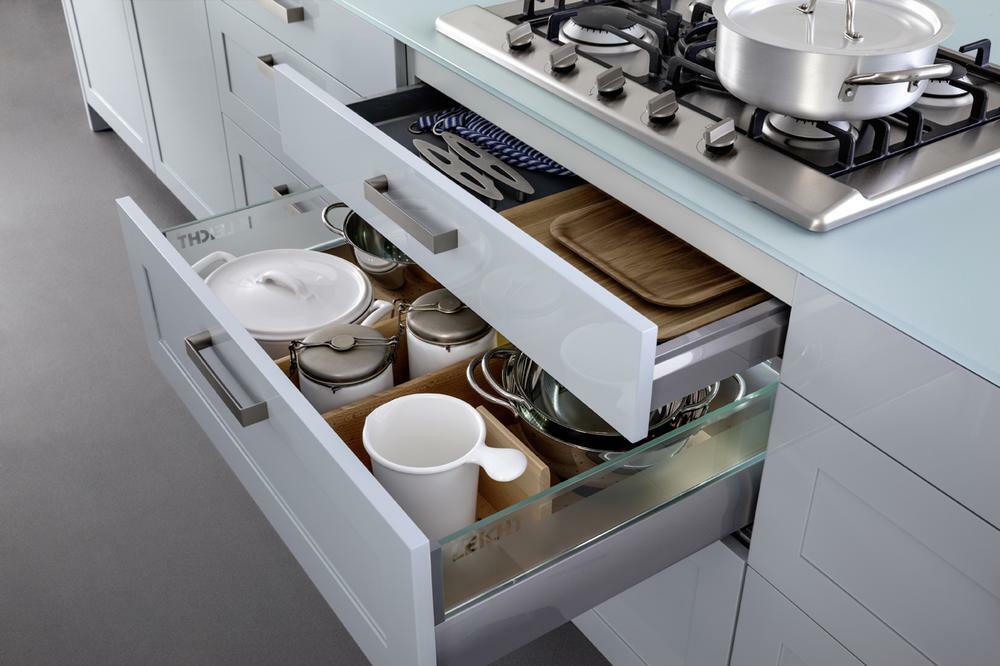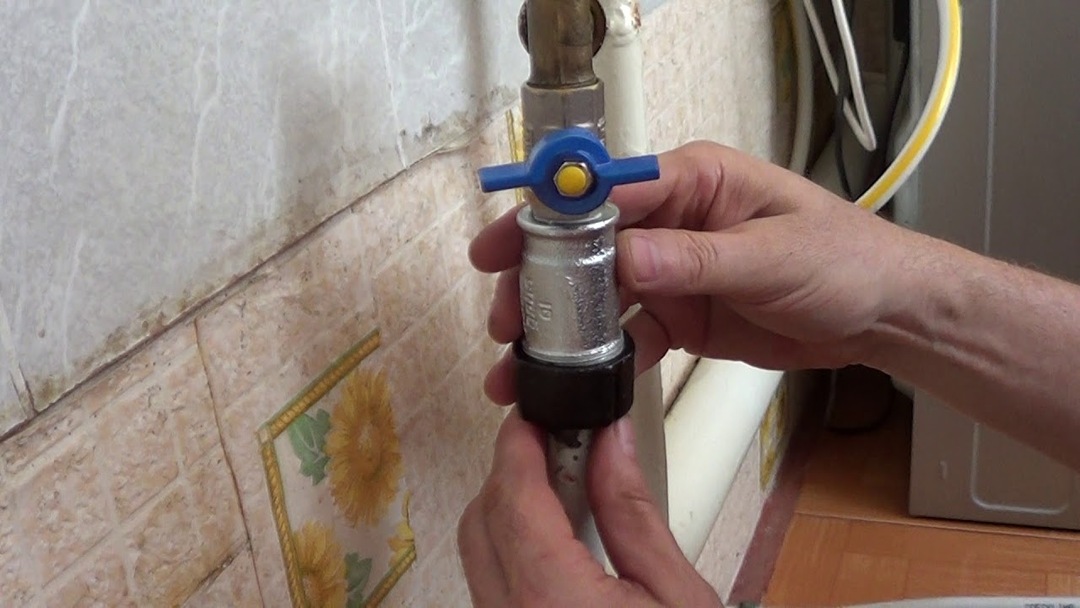Regular gas explosions in apartments are causing concern for owners, residents and utilities. Installation of a leakage control system partially solves this problem: it prevents fire, explosion, poisoning. The design, in addition to the signaling device, must include a valve on the gas pipe, which cuts off the fuel supply in the event of dangerous situations.
In this publication, we will get acquainted with the requirements of gas services for the integration of such a device into the pipeline. We will find out what types of valves can be connected to gas level alarms, what standards they must comply with. Plus, we will understand the nuances of installing the device on a pipe.
The content of the article:
- Building rules and regulations
-
The choice of equipment for the apartment
- Varieties of solenoid shut-off valves
- The ratio of the parameters of the cutter to the system
- Installing the device on a pipe
- Maintenance of the device
- The efficiency of the structure
- Conclusions and useful video on the topic
Building rules and regulations
According to SP 60.13330.2016 furnishing of living quarters gas sensors is optional and is carried out at the request of the customer. But this only applies to buildings that have already been built.
In accordance with p. 6.5.7 SP 60.13330.2016 gas alarm is required in new, reconstructed, subject to overhaul of residential buildings where the operation of boilers, columns, stoves and other equipment.
The actuator of such a sensor is a high-speed solenoid valve - a cut-off valve that blocks the gas supply. It should be installed at the gas inlet to the room and interlocked with the signaling device so that when the signal is given, the valve immediately stops the supply of blue fuel.
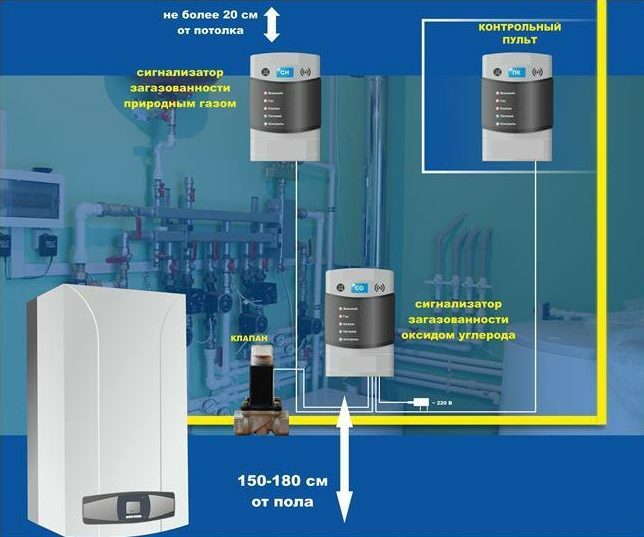
The location of the alarm and cut-off device depends on the density of the gas used and the features of the wiring in the apartment. Choosing a place requires high qualifications of the master
At the planning stage, the premises are examined. Areas where gas accumulation is possible (depressions, niches) deserve close attention. The presence of "dead zones" should not be allowed.
In addition to reworking the intra-apartment wiring, if necessary, disassembly, assembly or replacement of kitchen furniture, appliances, as well as installation are carried out:
- hidden wiring;
- alarm information supply systems;
- forced ventilation.
All work is carried out according to the project, which requires preparatory actions. First you need to contact the regional gas service.
The reconciliation instruction looks like this:
- Drawing up an application according to a sample indicating the desired changes in the highway. The document serves as the basis for the visit of the master to the place of installation of the equipment.
- Already on the spot, a representative of the organization examines, checks, makes calculations in accordance with the norms, taking into account the applicant's plan.
- An estimate is calculated, a plan is prepared.
- The plan and estimate are agreed: the document is handed over to the applicant for review and obtaining consent for the installation.
- Payment in case of agreement with the proposed project.
If the estimate and / or plan does not suit the customer, this is discussed with the foreman, a compromise solution is found and the project is finalized.
The choice of equipment for the apartment
All elements of the system must be completed with permits, Russian passport, certificate and / or a declaration of conformity with the technical regulations of the Customs Union, which allow their use on the territory RF.
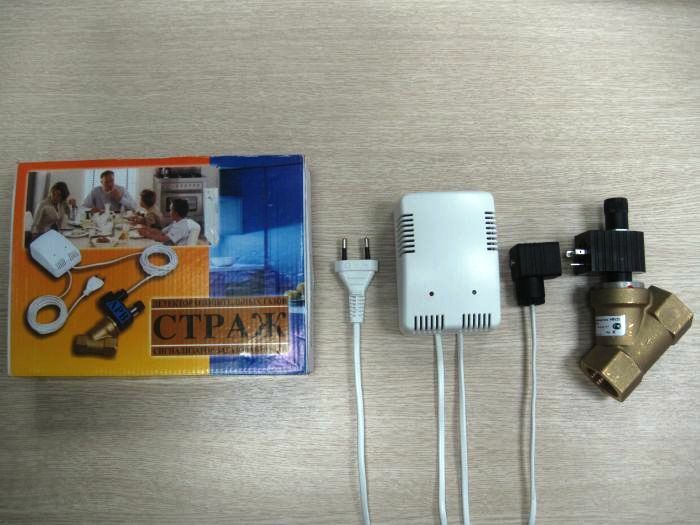
The gas protection system kit includes the alarm itself (there can be two of them - from carbon monoxide and natural gas), a shut-off valve, connecting wires
Buying a special kit is preferable to purchasing the instruments separately. In the first case, the elements of the kit are already coordinated with each other in terms of parameters, adapted for work in domestic conditions, and supplied with an instruction manual.
Domestic and imported models are presented on the market. Replacing and repairing the former is cheaper and easier.
If you select the equipment separately, please note that there are sensor models that are not designed for connecting a solenoid valve. They signal a leak, are able to inform the owner of the danger by sending SMS to the phone, but the gas is not cut off.
Mounting one sensor without a valve is inexpensive, you can install it yourself, but the reliability of protection against such a design is questionable. And such a system will not comply with the current rules.
Varieties of solenoid shut-off valves
Two types of cut-off devices are connected to the sensor: open (NO) and closed (NC). The first block the fuel supply only after the alarm in the system has been triggered. The latter also react in the event of a power outage.
It is possible to return the initial position of the valve after actuation both manually and automatically. In an apartment, manually operated valves are installed on the gas pipe, they are simpler and cheaper.

Household gas cut-off devices are most often made of brass or aluminum (silumin). They are suitable for a variety of non-aggressive gases: natural gas, propane gas, LPG
Normally open manual shut-off devices allow the equipment to operate as long as there is no coil supply voltage. De-energized condition prolongs their service life.
But due to the lack of voltage, such a device will not turn off the gas during a power outage, which is unsafe.

When working with a normally open valve, it is necessary to remove the protective cap, cock the shutter up until it locks, put the cap back on. When power is applied, the slam-shut is closed. To resume work, the procedure is repeated
The normally closed gas valve closes in a second if the alarm is triggered or the electricity in the apartment is cut off. In this position, he remains until the removal of dangerous factors.
The disadvantage of the variety is the constant voltage on the coil and its strong heating (up to 70 degrees).
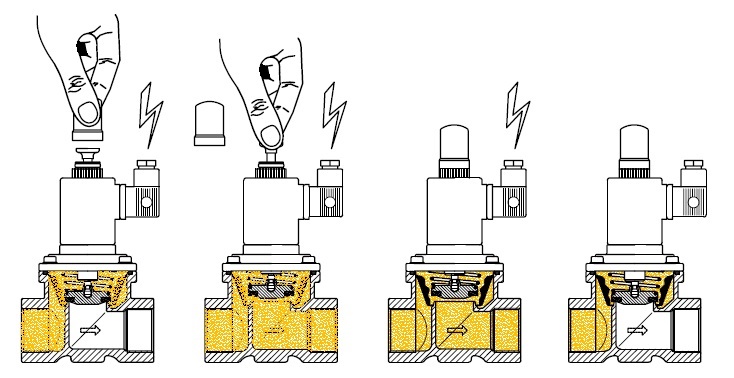
Working with a normally closed valve, you must first apply power to the coil, remove the protective cap, cock the bolt until it locks in place, put the cap back on. When triggered, actions are repeated
On sale there are cut-off devices with electric impulse control. They work differently. In the open position, the valve is held by a latch. If a current pulse from the sensor hits the coil, the latch is released.
If a closing impulse is received during a power outage (e / e) and when the alarm is triggered, the device acts as a normally closed one. If a pulse is received only by a sensor signal, the valve works according to the normally open principle and does not interrupt the gas supply when the electricity is turned off. These algorithms can be changed using the alarm settings.
We have provided more information about the types of the solenoid valve and the principle of operation of the device in our other article.
The ratio of the parameters of the cutter to the system
When choosing a device, the diameter of the pipe in the section of the valve insertion matters. In most cases, a device with a Dn value of 15, 20 or 25 is suitable for domestic needs, which corresponds to pipes 1/2 ", 3/4" and 1 ".
If the system contains boiler or columnthat do not work when the power supply is cut off, a normally open valve is installed.

A normally open slam-shut is not convenient when paired with a sensor that automatically checks its outputs. The signaling device will send pulses, which will trigger the valve
If the operation of the devices does not depend on the power supply, a normally closed slam-shut is mounted. It will not block equipment in the absence of electricity and will not leave the room unprotected.
Installing the device on a pipe
Work on the introduction of a shut-off valve into the system is carried out only by a master - an employee of the gas service or an individual entrepreneur. It is imperative that he has a special permit to perform this type of work and permits.
When choosing a place for installation, it is necessary to take into account the convenience of access to the manual platoon.
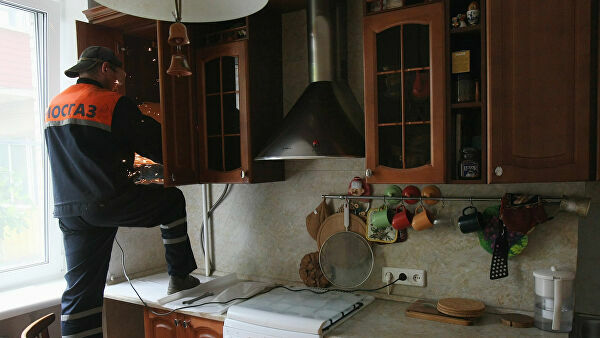
The specialist will first cut off the gas supply, then cut the device, check the equipment performance and give instructions on the maintenance of the structure
Where installation is possible:
- front gas meterif its design does not provide for the use of a cut-off device at the input to turn it off;
- in front of a household gas appliance - a stove, a column, a boiler;
- at the main entrance to the premises, if there is a gas meter with a disconnecting device at a distance of at least 10 m from the entry point.
In order for the valve to be installed quickly and efficiently, it is worth calling the masters in advance and clarifying whether additional consumables will be needed. If so, it is advisable to buy them in advance. The space where the work will be carried out must be cleared, and the kitchen surfaces and appliances must be covered with tarpaulin, burlap or other materials that are not prone to burning.
During the installation, specialists must strictly adhere to the requirements of the standards and regulatory documents. It is also recommended to be guided by passports and instructions from the manufacturer to the devices.
Maintenance of the device
Self-service consists of removing dust from the device. If a breakdown is found, you need to call an employee gas company.
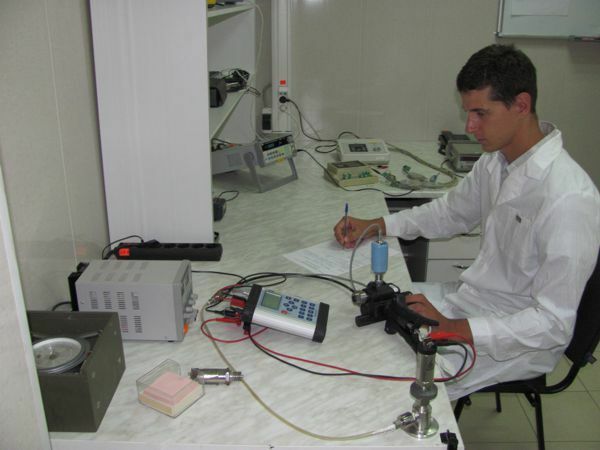
Maintenance includes annual metrological verification of the sensor. Outside this period, it is carried out when replacing sensors. Valve actuation is checked by specialists every six months
It is forbidden to service the devices yourself. Deliberate supply of a non-special gas mixture can lead to the destruction of the sensitive elements of the device.
The efficiency of the structure
Installing a signaling device and a gas valve in an apartment does not guarantee 100% protection against leaks or unauthorized interference with the operation of devices. The system, depending on the place of installation, turns off only a separate section of the gas pipeline or device.
But a leak is also possible on the common house line, therefore, stopping the supply of fuel to one device cannot be called effective. False confidence in complete safety can provoke much more negative consequences. We recommend that you look at the information about how the gas explodes in the apartment.
It is only really effective to equip all apartments and rooms in the building with a control system. In this case, in the event of a gas leak, the supply will be interrupted in the entire line.
Conclusions and useful video on the topic
Overview of a household alarm with a valve, assembly of the system.
Analysis of the design of the sensor and valve, its parameters, demonstration of the operation of the device.
Most apartment fires are caused by gas leaks. Installing a sensor with a valve will help prevent serious consequences from such situations. But the safety of property and human lives is guaranteed only when the equipment is correctly selected and its installation is carried out by a qualified gas service worker.
You have a gas level sensor installed in your apartment complete with a valve on the gas pipe and you want tell how this equipment has protected your family and property from negative consequences as a result gas leaks? Share your experience, leave recommendations on the advisability of installing such locking devices - the comment form is located below the article.
